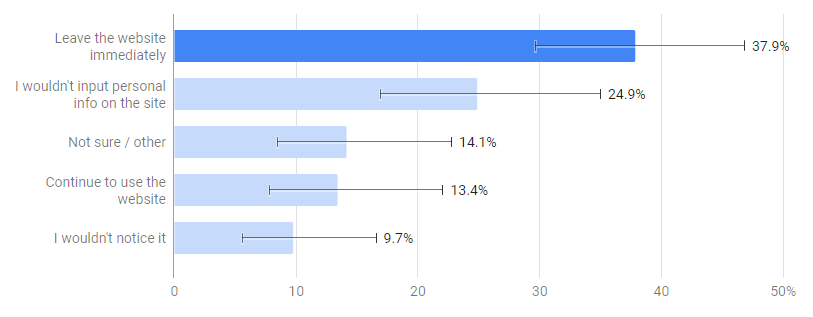Rate this article: 



 (8 votes, average: 4.00)
(8 votes, average: 4.00)




 (8 votes, average: 4.00)
(8 votes, average: 4.00)Beginning with version 68 being released in July 2018. Google Chrome will start marking all HTTP webpages as Not Secure, like this:
![]()
This change will be live in the Google Chrome release scheduled for July 24th.
Google announced this change in February, so webmasters have known for awhile this was coming – what we haven’t known is how users will react to this change. To get some insight into that question, we ran a Google Consumer Survey of 350 US adults, asking them:

Here’s what our survey respondents said…

Almost exactly 3/4 of the respondents indicated that they would leave the website and/or not enter any personal information. It’s likely that many survey respondents may be a little less security-minded when they face this scenario in real life, but this survey indicates that users view a “Not Secure” label as a big deal.
Users will be less likely to use and engage with HTTP websites after this change goes live in July.
We asked the question again, but this time the screenshot showed a well-known website (ESPN). Here are the results:

Note that users are slightly less likely to leave the site, but are equally likely to not input personal information. In short, a “Not Secure” message is still a big deal for a well-known website.
On the other hand, if your site is a smaller, less-known site, switching to HTTPS is even more important for your site.
If your website is still using HTTP, you’ll need to do three things before July: